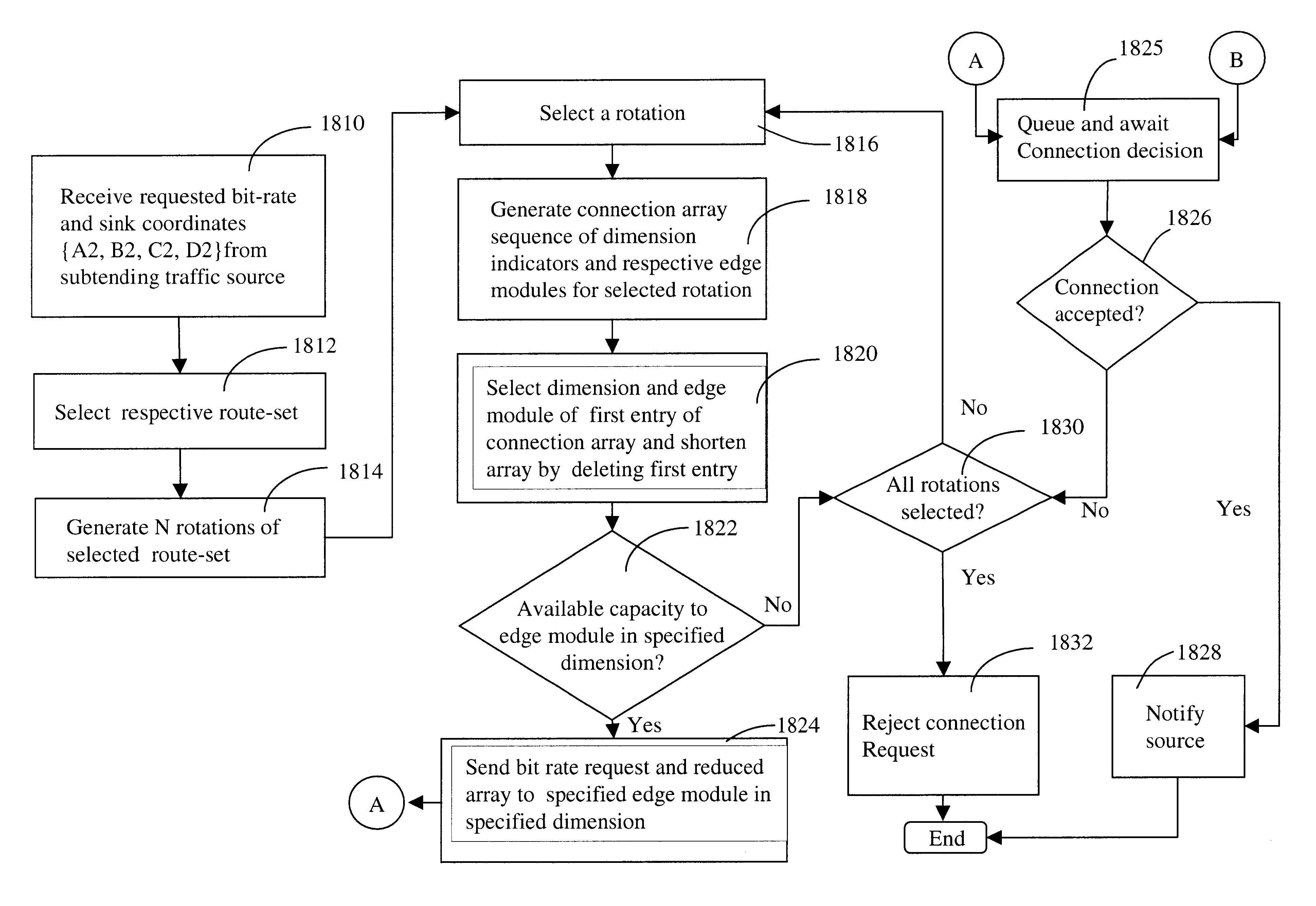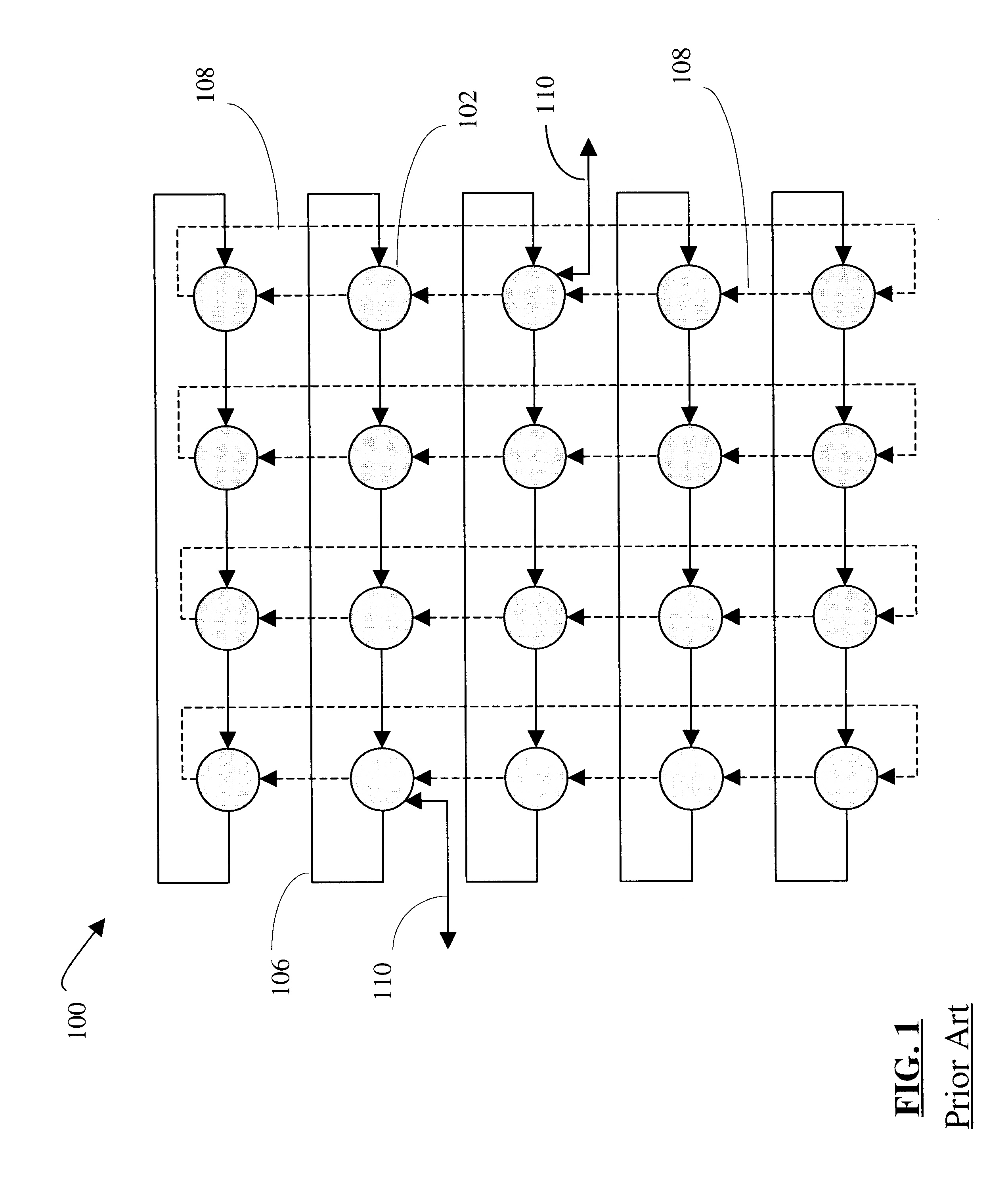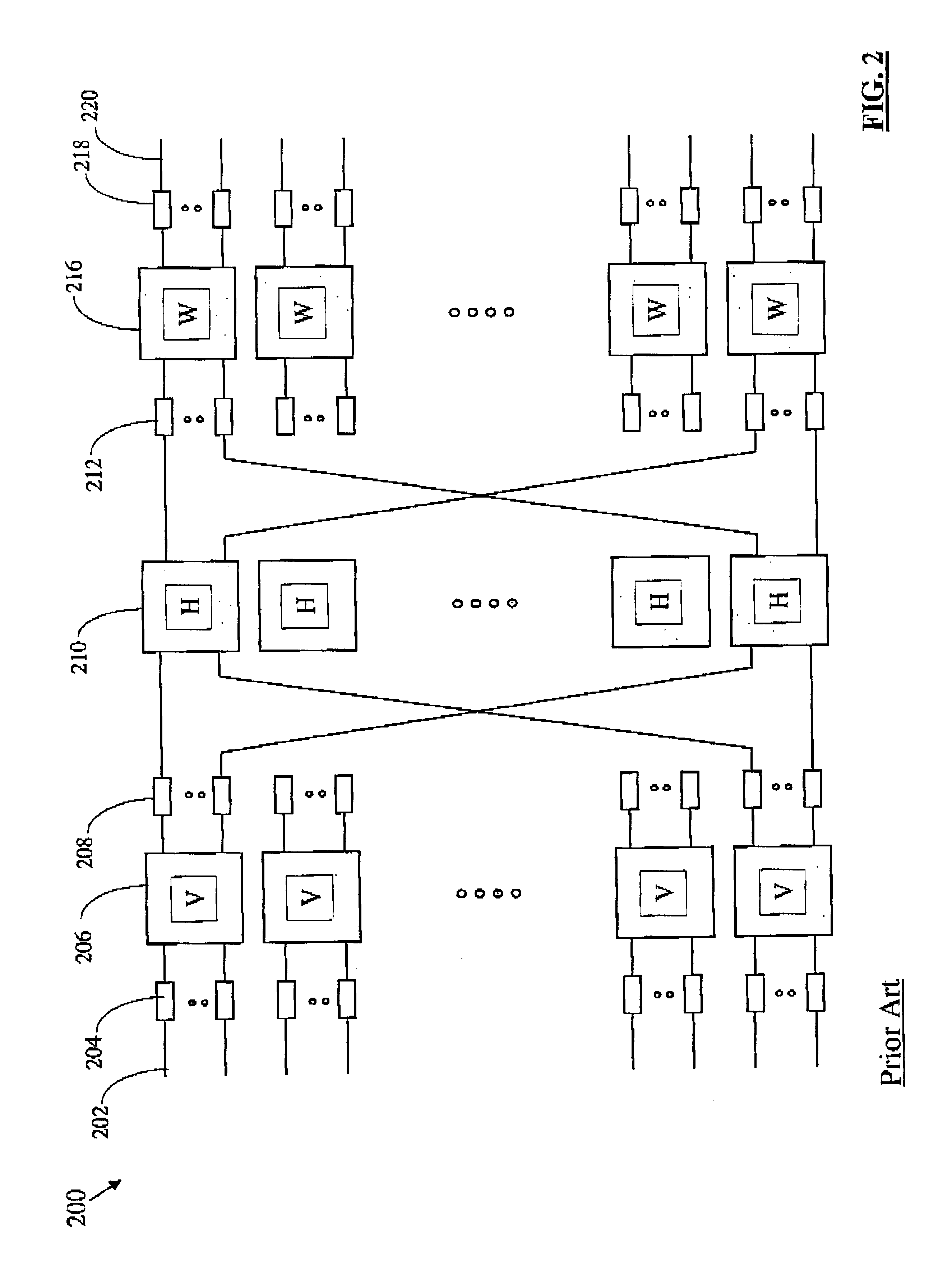Multi-dimensional lattice network
a multi-dimensional lattice network and network technology, applied in data switching networks, instruments, digital transmission, etc., can solve the problems of reducing the efficiency of the network, limiting the application of small-scale networks, and high-capacity data networks that provide quality of service, so as to reduce signaling overhead, facilitate routing through the network, and facilitate the effect of high access capacity
- Summary
- Abstract
- Description
- Claims
- Application Information
AI Technical Summary
Benefits of technology
Problems solved by technology
Method used
Image
Examples
Embodiment Construction
This invention relates to a multi-dimensional lattice network in which a plurality of edge modules (i.e., switching nodes connected to data sources / sinks) having unique identities are identified by N coordinates, N representing the number of dimensions in the network. The N coordinates are used for addressing the edge modules within the network. The network includes a plurality of sub-nets, each sub-net including at least two edge modules. The edge modules of each sub-net have N−1 corresponding identical coordinates. The edge modules of each sub-net are also connected directly and exclusively to at least one core switch associated with the sub-net. Every edge module in the multi-dimensional lattice network is connected to a core switch in each of the N-dimensions of the network. The number of dimensions in a network is limited only by the number of ports of the edge modules in the network. The network is therefore scalable to global proportions and the throughput capacity of the net...
PUM
 Login to View More
Login to View More Abstract
Description
Claims
Application Information
 Login to View More
Login to View More - R&D
- Intellectual Property
- Life Sciences
- Materials
- Tech Scout
- Unparalleled Data Quality
- Higher Quality Content
- 60% Fewer Hallucinations
Browse by: Latest US Patents, China's latest patents, Technical Efficacy Thesaurus, Application Domain, Technology Topic, Popular Technical Reports.
© 2025 PatSnap. All rights reserved.Legal|Privacy policy|Modern Slavery Act Transparency Statement|Sitemap|About US| Contact US: help@patsnap.com



